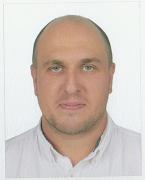
Artem Sergienko
PostgresPro
11:10
26 September
22 min
Cluster software hardening
Hardening is the process of strengthening the security of a system in order to reduce risks from possible threats. In my presentation, I will tell you how to protect service cluster communications using TLS connections, in order to avoid accidental or unauthorized access to Patroni's REST API and ETCD storage.
Video
Slides are available to logged-in participants